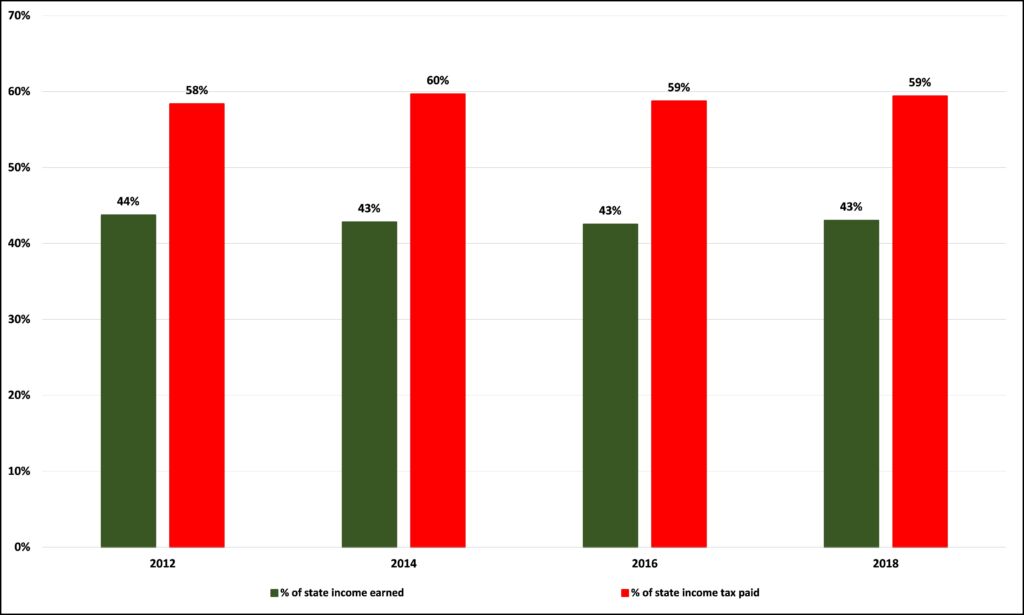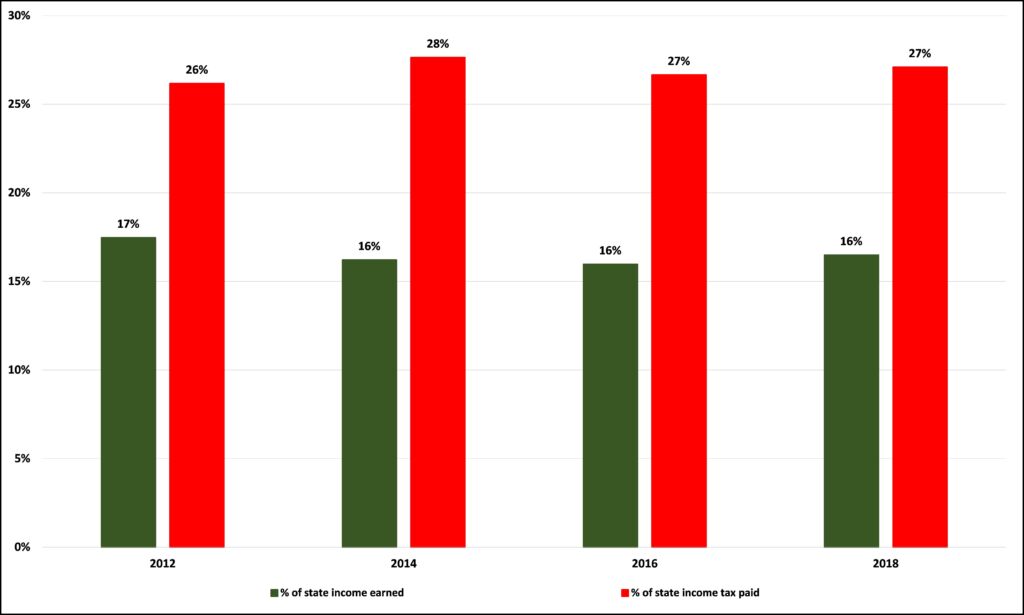Minnesota’s last top rate income tax hike didn’t increase the share of state income tax paid by ‘the rich’
In May 2013, the Minnesota legislature voted to create a new income tax rate for top earners of 9.85 percent, 2 percentage points above the prior top rate. Gov. Dayton said that the tax hike was “as much about leveling the percentage of taxes people pay as it is a way to balance a state budget.”
Did the tax hike, which kicked in in 2014, have the desired effect? Did it level “the percentage of taxes people pay”? We can answer that by looking at the Tax Incidence Studies produced by the Minnesota Department of Revenue.
Figure 1 shows the share of Minnesota’s total household income earned by its top earning 10 percent of households and the share of total state individual income tax those households pay. As we can see, and as I’ve noted before, these households have earned a pretty consistent share of the state’s total household income: 43/44 percent. They have seen no increase in their share of Minnesota’s ‘pie’.
But neither have they seen any increase in the share of Minnesota’s total state individual income tax they pay. That, too, is a pretty steady amount: 58/60 percent. In short, hiking the top rate of income tax didn’t increase the share of income tax paid by ‘the rich’.
Figure 1: Share of state’s income earned and income taxes paid by the top 10% of Minnesota households by income

Source: Department of Revenue
In 2018, a household income of $164,720 put you in this top 10 percent. Maybe you don’t consider this ‘rich’. What about ‘the 1 percent’ we hear so much about?
Figure 2 shows the share of Minnesota’s total household income earned by its top earning 1 percent of households (those earning over $577,540) and the share of total state individual income tax those households pay. We see the same pattern. Once again, these households have earned a fairly consistent share of the state’s total household income, 16/17 percent: the top 1 percent’s share of the state’s ‘pie’ hasn’t increased either.
And, again, neither have the top 1 percent of households by income seen any increase in the share of Minnesota’s total state individual income tax they pay following Gov. Dayton’s tax hike. That, too, is a pretty steady share: 26/27 percent. So again, hiking the top rate of income tax didn’t increase the share of income tax paid by the top ‘1 percent’.
Figure 2: Share of state’s income earned and income taxes paid by the top 1% of Minnesota households by income

Source: Department of Revenue
And it should have. The other tax rates remain unchanged. Gov. Dayton’s tax hike applied only to those Minnesotans earning over $152,540 in 2014. If the tax hike did bring in more revenue from the top earners as promised, the only way we can square that with the constant share of income tax revenue they pay is if the amount of income tax paid by all the lower earning households went up proportionally.
If it is true that politicians can wring more cash out of ‘the rich’ simply by raising tax rates on them, we should see, in these numbers, some increase in the share of state income tax paid by ‘the rich’ following Gov. Dayton’s tax hike. We don’t. This suggests that the results of hiking top tax rates, as Gov. Walz now proposes, will be a disappointment to those expecting a bundle of new cash for Minnesota’s politicians to spend.
John Phelan is an economist at the Center of the American Experiment.